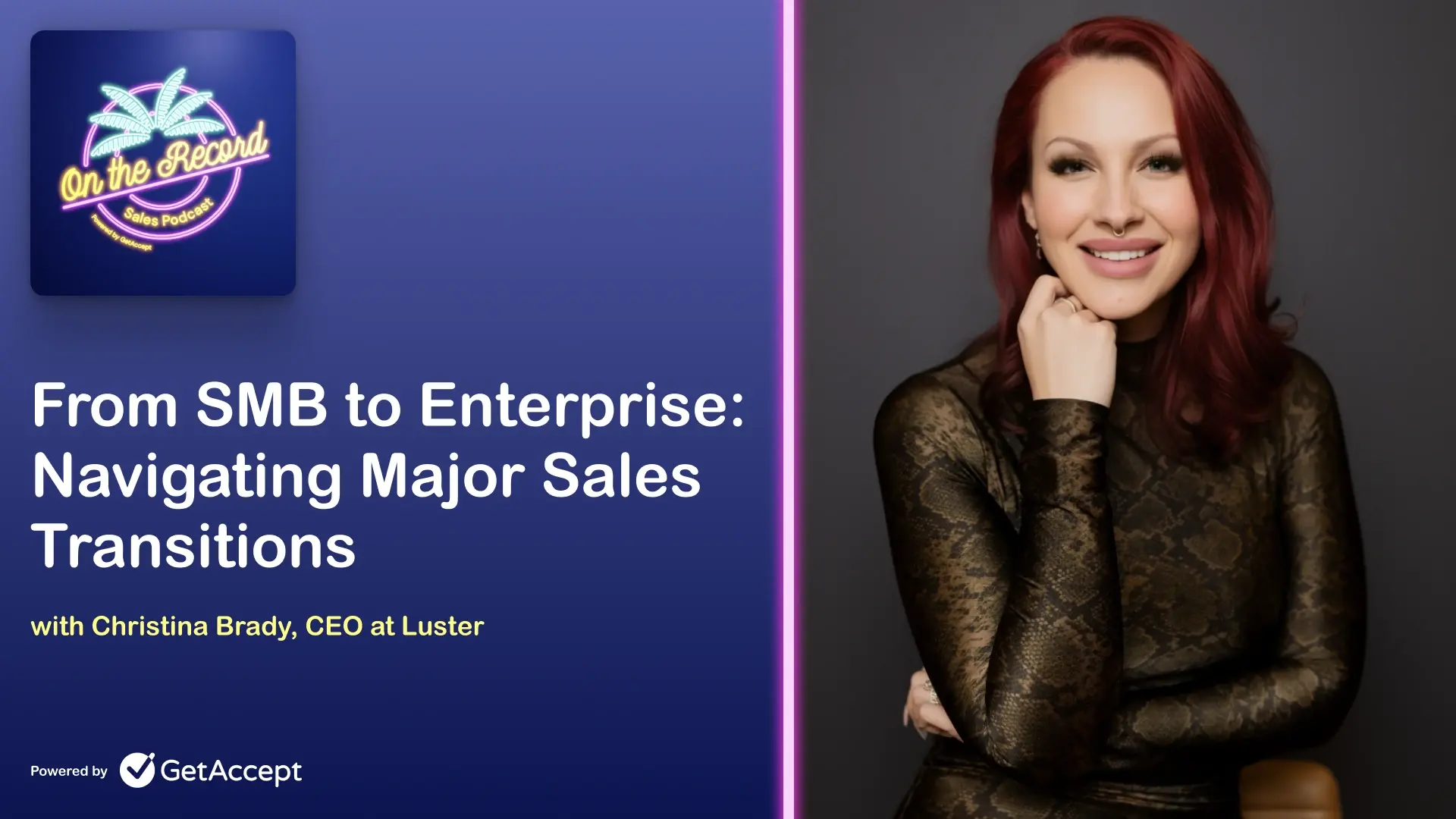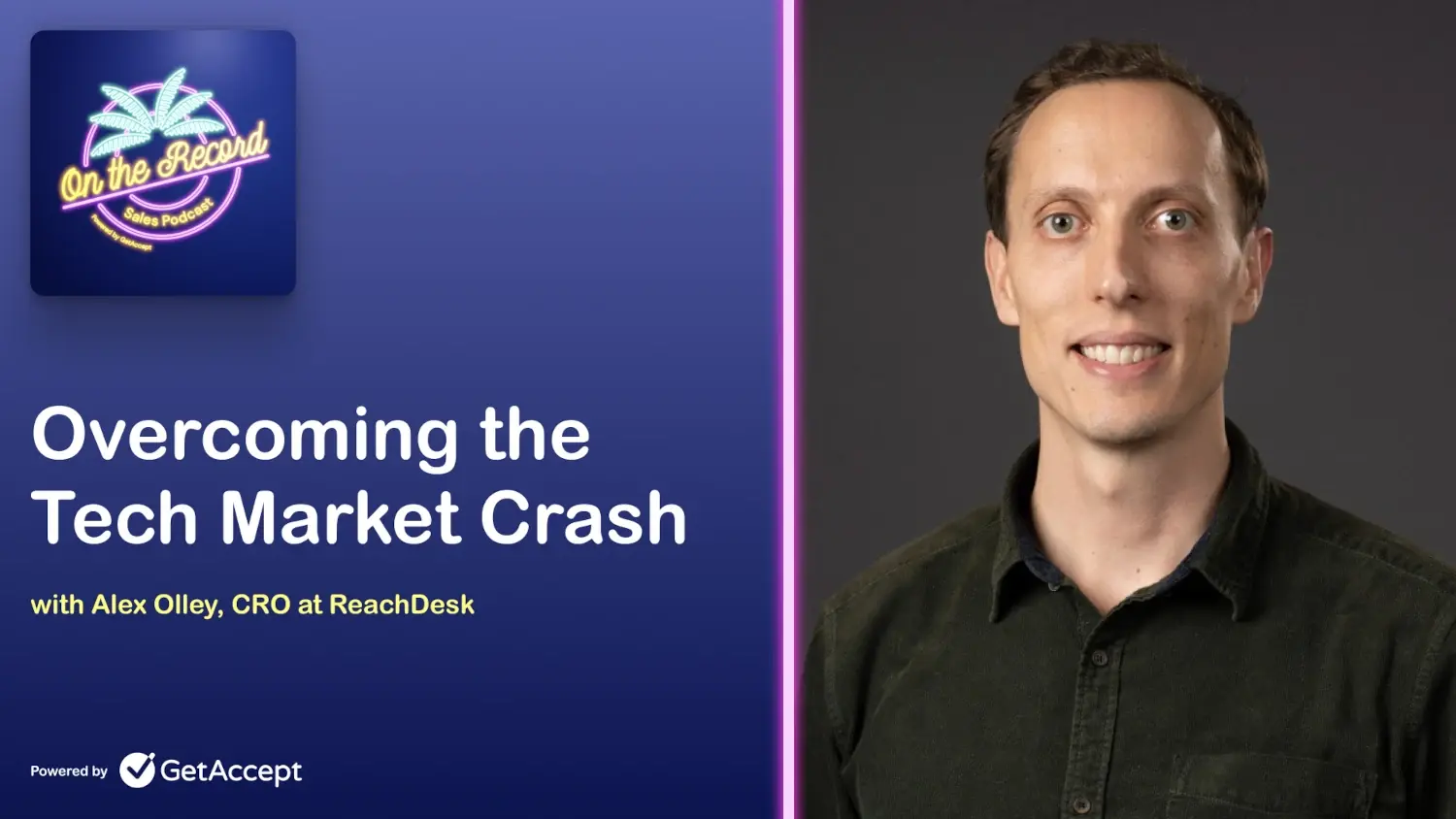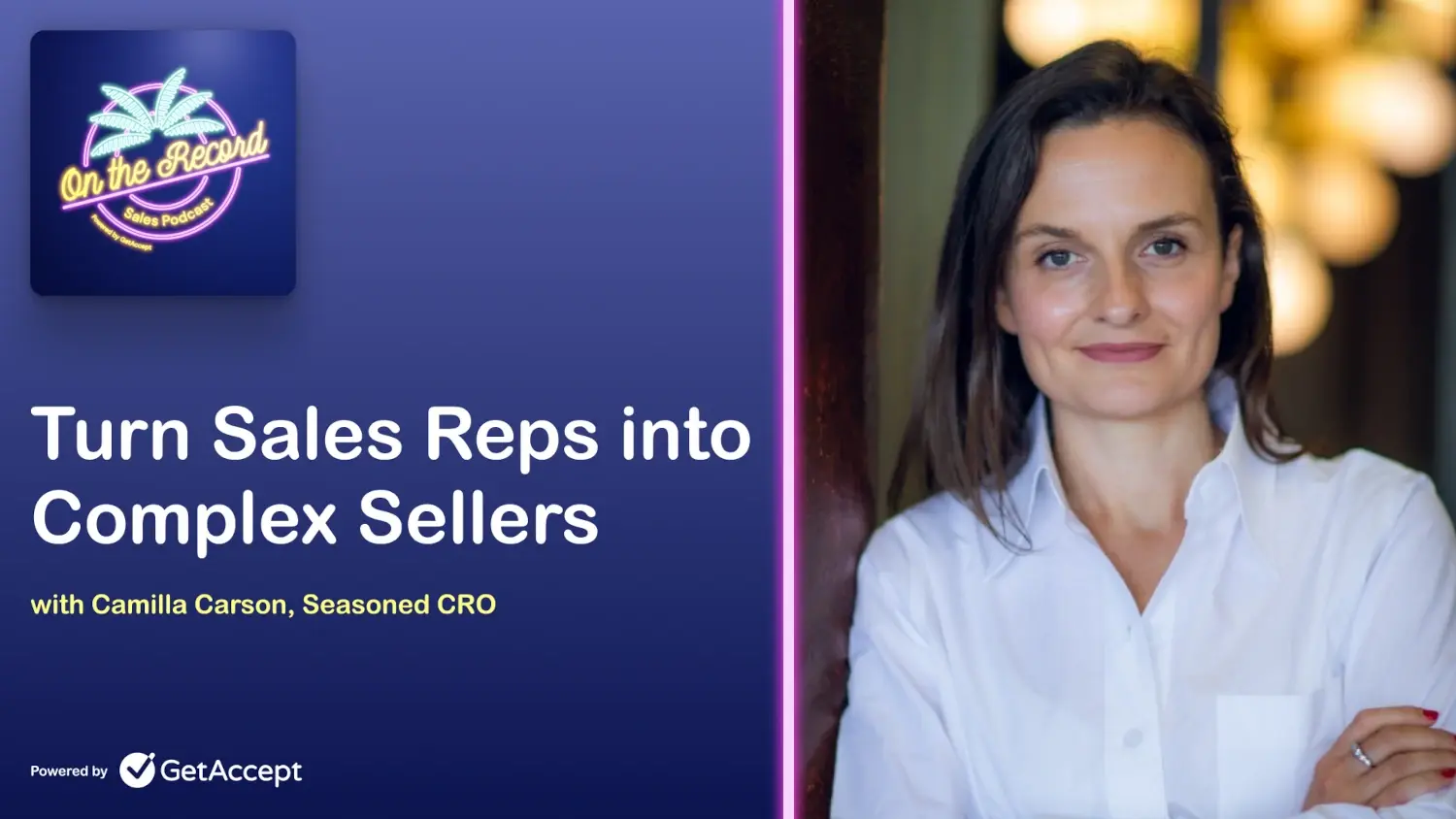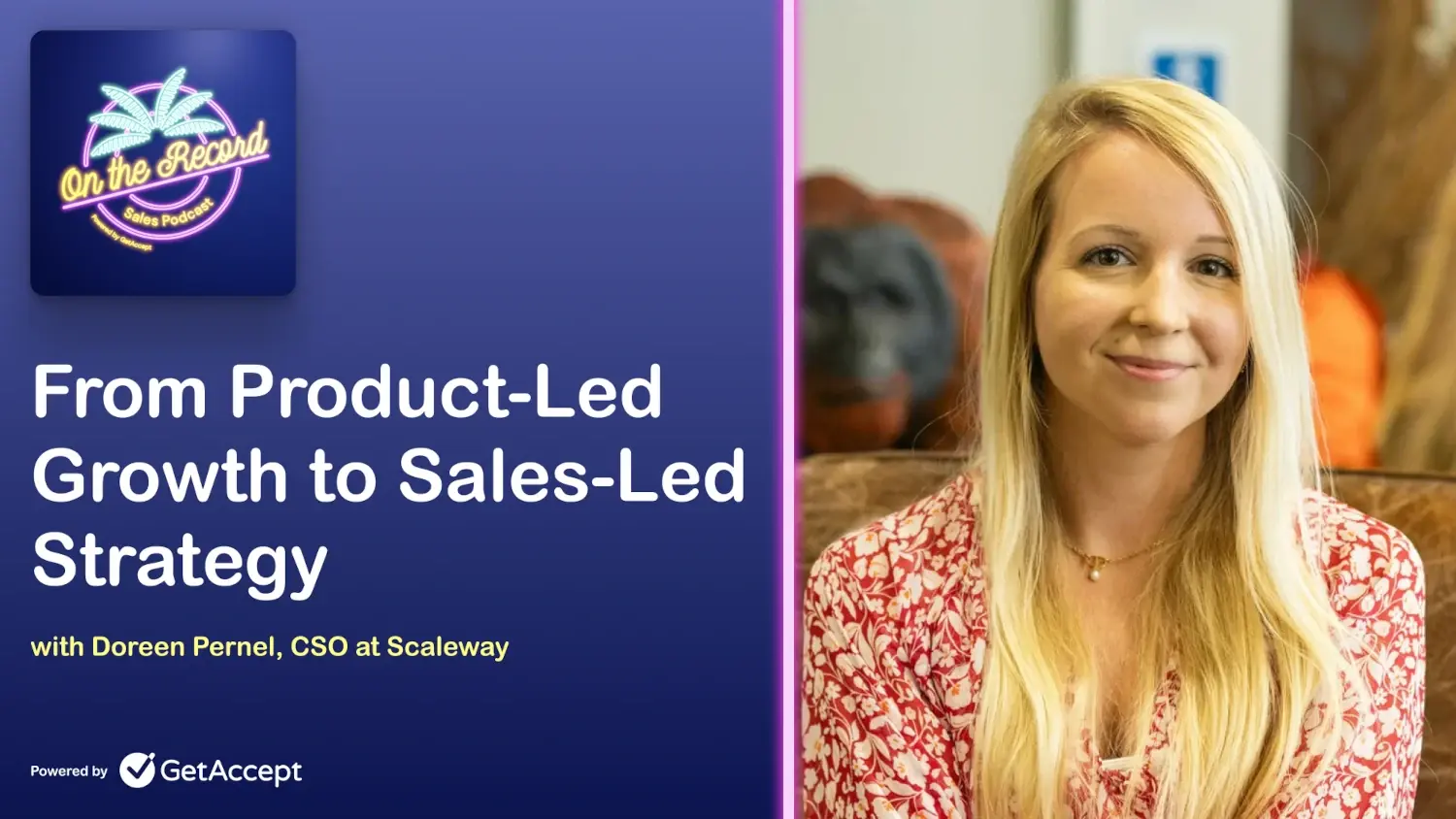Enterprise sales is complex.
Like very, very complex.
Anyone who tells you otherwise is 100% lying.
I've seen this complexity firsthand. Multiple organizations I have worked with have faced this issue, and we would have deep dive sessions to make it as simple as possible.
To make it more complex is when you are transitioning from SMB sales to enterprise sales with reps who haven't done the motion before.
Ever faced this situation?
Well, if you are going through this right now or planning to make this type of transition, I have something for you.
Instead of sugar-coating things, I'm bringing you the unfiltered truth through Christina Brady's experience, who navigated this exact nightmare scenario.
She basically described the situation as "I jumped into a pool of sharks wearing a meat suit."
With 12-13 years of SaaS leadership under her belt, Christina faced a challenge that would make most professionals run out the door. Her organization was attempting to pivot from SMB sales to enterprise sales during an industry meltdown. This is not an easy transition at all to make.
"We were getting absolutely clobbered," she mentioned in our interview. "Layoffs everywhere and venture capital drying up left and right."
I've seen this play out, and it's not pretty.
The impossible scenario
Here is how the scenario started for her. She inherited a team after a 50-60% reduction in force. Then leadership wanted to transition from quick, small-business sales to enterprise-level deals.
The hardest part of this equation?
The product was not ready for enterprise customers.
I have worked with a ton of clients, and one thing I always notice is that the sales team will always struggle to hit target if the product is not ready for a specific market.
Yeah, you can try to sell it, but if you don't have the right resources going into the market no way are you going to win.
The wilder part of her situation is that she had 16-17 direct reports across four business lines, so it was hard for her to move motivation in a certain direction.
Most people would quit here.
Yet Christina saw the opportunity, which is the exciting part of how she unpacked this and executed it.
Check out the full convo with Christina
The personal rollercoaster
With these situations, it can be emotionally draining.
You probably had an emotional rollercoaster reading through all the obstacles she had to go through.
What I love about talking to Christina is the brutal honesty she gives in her advice about the emotional hurricane this was.
She said to me in our interview, "It borderline ate me alive, I was carrying so much emotion because I cared deeply and didn't want to let anyone down."
As leaders, we don't want to let anyone down. However, at the same time, we have to know when to stop or push our limits. This was a stop-and-assess type of situation.
The stress wasn't just professional, it was personal.
"I was staying up at night, wondering if I could actually pull this off. The fear was consuming. Would my job be safe? Could I make this work?"
This is what Christina would say to herself every single night, which I feel like most of us have probably been there.
With every problem, though, is a path toward a solution.
Understanding the enterprise sales beast
Most people think sales is about smooth talking and quick closes. This is farthest from the truth.
I used to think the same thing until I realized that sales, and especially true enterprise sale, is a marathon, not a sprint. Which Christina talked about throughout our interview, saying that a true enterprise sale is a marathon disguised as a sprint.
A typical sales cycle is 12 to 18 months. 9 to 13 decision-makers.
The way they kept up with all these people was that they would create organizational charts for each deal that they had. They would present the people they were talking to in each org and then map towards the people they needed to talk to, which Christina would help guide them on what to do next.
This was part of the rebuild process, but it was much bigger than that.
The strategic rebuild
Her approach?
Methodical.
Relentless.
Almost scientific.
She started by understanding the current sales process – which, spoiler alert, didn't really exist. "Everybody here had closed deals," she discovered, "but they'd all done it completely differently."
Once she found that out, she started documenting EVERYTHING.
Yes, EVERYTHING.
My tactical advice is moving forward, for every single sales call I would document what exactly is happening in calls. How people are closing the deals. What is working. What is leading to people being not interested. This is how you build a strong sales motion.
Documentation: The secret weapon
"Documentation is huge," Christina emphasizes. She realized sales evolves through distinct stages:
- Founder-led sales
- Founding sales rep-led sales
- Scalable sales motion
Each stage is its own animal. "What works for a founder won't work for every salesperson," she learned.
That is why you tactically want to take what works in each process and make it a system. If it's unique to the person, we psychologically understand it, but we know it's not something everyone can do.
The patience of transformation
Now, all these things sound great, and you will start executing them ASAP. However, most companies want results yesterday. Christina understood the long game though.
"It might get worse before it gets better," she noted. "If you start reaching out to enterprise customers in March, you might not see meaningful results until six or seven months later."
So, it was important for her to communicate this every month to her organization so they knew where she was at.
Same advice goes to you all: if you know something is going to take time, find other use cases where it took time and showcase that as you grow.
Lessons learned
Speaking of growth, here are some lessons you can screenshot on your phone as you go through this transition that I learned from Christina:
- Communication is everything
- Understand your sales cycle
- Document like your business depends on it
- Be patient
- Know your market fit
The hidden impact
Beyond metrics and strategies, Christina discovered that top-level stress decimates teams.
"Any volatility impacts your people more than most leaders realize," she reflects. "It's not just about numbers - it's about human beings trying to do their best work in challenging circumstances."
As a leader, protect your team from top-level stress. It only distracts the team and gets them off course from accomplishing the goals you want to.
The founder's perspective
The cool thing we learn in these interviews is how the lessons have carried over to the next stage of their career.
Now leading her own company, Christina's biggest lesson is having a maniacal focus on who you're serving is so important.
Her advice below is simple but powerful. "Be willing to know where you're right, know where you're wrong, and be okay with both of those things."
We can't always be right. But we can always adjust to get the right answers.
Final thoughts
"You either learn by seeing something done really, really well," Christina says, "or by seeing something done really, really not well."
I've lived this exact lesson. In my years of working with sales teams, I've seen groups with terrible ways of doing things that I wanted to avoid. I've also seen teams crush it so hard that I wanted to copy exactly what they were doing.
Christina's journey is a perfect example of what you can do when things get bad, but implement good habits from what you learned throughout your career, which I believe we can all learn from.
If you're going through a transition in your sales motion and thinking about enterprise sales, check out the full conversation with Christina at getaccept.com/media-hub.
Trust me, it'll be worth your time.
Catch my full conversation with Christina on the Revenue Rebels: On the Record sales podcast.




